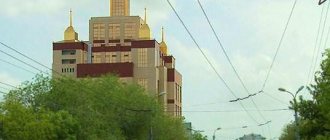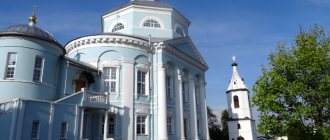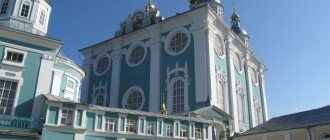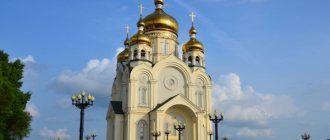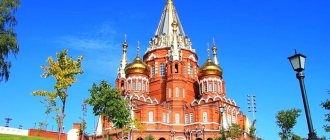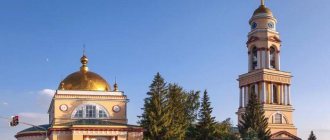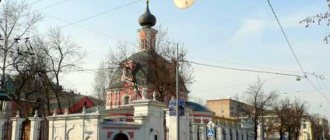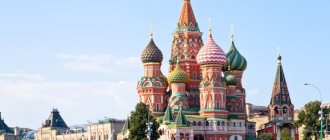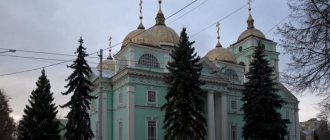Hello! Today I will tell you about the pearl of the city, the spiritual center of Orthodox believers - the Annunciation Cathedral (Voronezh). The beautiful cathedral stands, looking up into the sky, and delights believers with its splendor.
I would like to tell you about the cathedral itself, about its history over three centuries, and about modern life. And also to introduce you, dear reader, to the life of the temple departments, its library and Sunday school. Believe me, this article will open the temple for you from many different sides.
Annunciation Cathedral (Voronezh): schedule of services, address, telephone
The cathedral is located in the city center on Revolution Avenue, the former Bolshaya Dvoryanskaya Street. It is located in the ancient Pervomaisky Park, which is often visited by young people. Near the park there are the Medical University and the Academy of Technology. In the park, near the temple, there is a playground where young mothers walk with their children.
Below is the address, telephone number, website of the cathedral and schedule of services. Divine services are held in the morning from 7 o'clock. 40 min., in the evening – from 17 o’clock. For example, August 14, 2021 (August 1, old style) - The Origin of the Honest Trees of the Life-Giving Cross of the Lord.
- 07:40 Clock. 08:00 Liturgy. The rite of small consecration of water. The beginning of the Dormition Lent.
- 17:00 Vespers. Matins with akathist to the Mother of God: “Rejoice, Unbrided Bride.”
The schedule is constantly updated depending on holidays, so it is better to go to the cathedral website and find out the schedule of services for the day you are interested in. If you are not trying to get to the service, but just want to pray alone, then the doors are open for you every day from 06.00 to 19.00. The cathedral is located at: Voronezh, Revolution Avenue, 14B. Phone, +7 (900) 931-86-24
Abbots, clerics
- ….
- Eutropius (mentioned 1616)
- …
- Gabriel (mentioned 1692 - mentioned 1710)
- Mikhail Ivanov [2]
- Cosmas Onisimov (1710s)
- Maxim Mikhailov (? - 1744)
- Dimitry Kristalnikov (1744 - 1752)
- Vasily Alimpiev (mentioned 1755 [4] - ?)
- Simeon Klyucharyov (? - 1780 [5])
- Georgy Patritsky (1780 - 1787)
- Ioann Sakharov (mentioned March 31, 1793 - 1807)
- Afinogen Pechersky (1807 - 1812)
- Ioann Scriabin (March 18, 1812 - June 28, 1813)
- Ioann Tairov (mentioned 1816)
- Mikhail Scriabin (1829 - August 1, 1836)
1950s - 1998 - destroyed
- Andrey Skakalin (December 9, 2011 - December 24, 2015)
- Oleg Shurupov (December 24, 2015 [6] – March 1, 2021 [7]) acting cleric
- Roman Vylusk (since March 1, 2017)
Description of the Cathedral of the Annunciation in Voronezh
If you go from the city center to the building of the South Eastern Railway Administration, then behind it on the left side will be the Pervomaisky Garden, where the snow-white beauty - the Annunciation Cathedral - rises majestically. Its height is 85 meters. There are photographs of the cathedral on the Internet, taken at different times of the year, during the day, in the evening, at night. Personally, it somewhat reminds me of the Moscow Cathedral of Christ the Savior.
If you look closely, the temple consists of seven domes, one of them is the main and highest. Between the domes and the roof there is a belfry where the bells are located. The roof is lined with a special coating from the sun, rain and wind. The temple is made of white brick, later plastered and covered with light paint. The crosses are covered with special gold leaf.
Inside the cathedral there is a three-row high iconostasis, half of the central part is open. The Royal Doors form a semicircular portal with carvings and large lapis lazuli plates. Full figured Annunciation, below - evangelists in pairs. The walls are decorated with many mosaics, which are a copy of the mosaics of the Sophia Cathedral in Istanbul (Constantinople): the Savior on the throne with the Mother of God and the Holy Prophet John the Baptist.
Unfortunately, just recently the Turkish authorities gave the St. Sophia Cathedral to Muslims as a mosque.
I would like to add that inside the temple are the venerable relics of Saints Mitrofan, Tikhon of Zadonsk and Hieromartyr Peter Zverev, which were transferred here from the Intercession Cathedral in early December 2009. Pilgrims come here from other cities of Russia, from near and far abroad, to venerate the great Fathers of the Church.
Also inside the cathedral there is an icon donated by the Nizhny Novgorod Diocese, with particles of the holy relics of the saints of the Nizhny Novgorod land: St. Seraphim of Sarov, Mother Alexandra, the first abbess of the Diveyevo monastery and other saints.
There is also an icon from the Kiev Pechersk Lavra with particles of the relics of saints of the Ukrainian Orthodox Church. You can find out all the details about the cathedral by watching the video below.
Interior decoration
The iconostasis in three rows was made by masters of the Holy Trinity (Shchigrovsky) brotherhood, famous in Russia for the products that decorate churches and monasteries around the world. Carvers, carpenters, artists, and gilders worked on it, whose works are recognized by believers and specialists and are defined as the “Shchigrov” style.
The iconostasis does not cover the height of the cathedral, leaving half of the central conch free, creating a feeling of space and light. At the same time, it looks elegant and impressive. The local row is occupied by saints who are especially revered in the Voronezh diocese. The Royal Doors, made in the form of an arched entrance, are decorated, like the entire iconostasis, with gilded carvings interspersed with lapis lazuli plates.
A lace overlay with a floral pattern is placed on top of the stone. The solution to the stamps, which depict scenes of the Annunciation, is unconventional. The interior is decorated with copies of mosaics from the St. Sophia Cathedral in Constantinople: the Savior with the Virgin Mary and St. John the Baptist.
History of the Voronezh Cathedral
The history of the Cathedral dates back to the 16th century. When a city emerged after the fortress, a wooden church was built (1586). But often, due to raids by Tatars, Polovtsians, and other external enemies, the temple caught fire. It was extinguished and restored again. After the formation of the Voronezh Diocese, a decision was made to build a new church (1682).
The meager outlines of that first temple have reached us. It is known that its walls were high and straight, the windows were located in two rows, and the roof was five-domed with crosses. The iconostasis was located in six tiers, and the most important icons and the Royal Doors were decorated by craftsmen with silver and gilded frames. Soon the temple began to collapse, as it stood near a moat.
Under Metropolitan Pachomius (Shpakovsky) a stone church was built. Construction took place between 1718 and 1735. The event of 1836 was the opening of the Mitrofanovsky Monastery. Since 1913, Metropolitan Tikhon (Nikanorov) was appointed to govern the Voronezh diocese. The Annunciation Cathedral existed for ten years (until 1929), after the authorities closed the Mitrofanovsky Monastery (in 1919).
During the German occupation of the city, the cathedral was destroyed (1942-1943). The Intercession Cathedral was opened to parishioners, but it did not replace the previous one. The authorities, together with the clergy, decided to build the Annunciation Cathedral (1998). The project was carried out by the architect Vladimir Petrovich Shevelev.
Creation of the first cathedral
Historians have ambivalent assessments of the creation of the first cathedral. E.A. Bolkhovitinov determined the date of construction - 1620. Researcher N.I. Polikarpov believed that this was closer to the time of the founding of the fortress (1585). At the same time, a church was built in the suburbs.
There were two thrones: the Annunciation of the Blessed Virgin Mary and St. Nicholas the Wonderworker. After the Cherkasy raid in 1590, the fortress was burned, the cathedral was damaged, restored in 1594, it was moved within the city limits.
In 1625, a wooden cathedral was built again; on September 13, 1628, the temple burned down. In July 1629, by decree of the tsar, permission was given to restore the cathedral in Voronezh. (1634). It escaped the fire and existed until the creation of the Voronezh diocese (1682), headed by Bishop Mitrofan (Sokolov). Vladyka did a wonderful job helping the revival of the Voronezh region. He raised funds by helping Peter I build ships.
The Annunciation Church became the Cathedral in 1682. Soon a stone church was built (1690), here since 1682 there was the residence of the Bishop, from 1745 to 1822 - the Voronezh Theological Seminary.
Construction of a new Cathedral in Voronezh
The first stone of construction was laid on August 28, 1998. The bookmark was consecrated on November 15, 1998 by His Holiness Patriarch Alexy II of Moscow and All Rus'. Three years later the dome was raised. In the period from March 2002 to December 2003, the main bell was raised to the belfry, the construction of the bell tower was completed, and the cross with the spire was raised.
In May 2003, a bronze monument to St. Mitrofan was opened (its sculptor I.P. Dikunov). Also in his honor in August 2003, the “St. Mitrophania Foundation” was created. The funds raised through this fund were intended to complete the construction of the cathedral. There were advertisements on radio, television and in newspapers to raise funds for this fund. The townspeople donated money as much as they could for the construction of the cathedral.
Speaking about construction, it should be noted that the construction was citywide. Many enterprises took part in its construction. For example, the Voronezh enterprise Vera made bells, and Vostok-Service LLC erected the walls of the cathedral. Many organizations and individuals donated large sums of money for the construction of the cathedral, for example, former regional governor Ivan Shabanov.
On April 7, 2004, a liturgy was celebrated in the temporary lower church, and from the next day services began to be held daily. On December 6, 2009, the opening of the Annunciation Cathedral took place. On September 18, 2011, Patriarch Kirill of Moscow and All Rus' consecrated the cathedral during his visit and donated an icon with the Rudensky image of the Mother of God.
Interesting facts and legends
On the territory of the Mitrofanovsky Monastery, the complex of which for some time included the Annunciation Cathedral, a hospice house was built. It has survived to this day. Pilgrims lived in it, beggars who came to the monastery for alms, and workers stayed there. Among the guests of the hospice house in the summer of 1891 lived Alexey Peshkov (Maxim Gorky).
He worked here as an assistant gardener, and reflected his impressions of communicating with pilgrims in his works.
After the revolution, the Annunciation Cathedral was closed twice. The temple was first closed in 1919, but 3 years later the clergy declared it “renovationist”. This opposition movement in Russian Orthodoxy, supported for some time by the Bolsheviks to destroy the canonical church and weaken its influence on the people, caused a temporary split in the clergy.
The open temple worked until 1929, then it was closed again. The Pervomaisky Garden, where the majestic cathedral now stands as “a symbol of faith, unity and repentance,” has always been a favorite vacation spot for Voronezh residents. Opened in 1840, it welcomed guests in the winter with an ice skating rink, and in the summer with performances by artists. In the 30s of the 20th century, a theater building was built here and a circus was located.
The terrible history of the garden became known after the foundation of the Annunciation Cathedral. It turned out that in the thirties prisoners were kept here before being sent to camps. There were both “political” prisoners and those convicted “for their faith.” Many died before being transported to the place of imprisonment. The ground where the temple was built was watered with the blood of people.
Speaking about the new Annunciation Cathedral, it is necessary to remember that its history is still short, but interesting customs and traditions have already arisen here:
- There is a tradition in the Annunciation Cathedral: the international holiday “Day of the Elderly” is celebrated annually. According to the secular calendar, the celebration falls on October 1st. The church has joined a good initiative and, at the end of the Divine Liturgy, congratulates the elderly people who come to church services. A festive table is set for them with tea and pastries, at which conversations about life are held.
- Taking part in the moral education of children, missionaries of the Annunciation Cathedral conduct classes in educational institutions of the city. Classes within the framework of the “Week of Kindness” help children form a correct understanding of these two categories, the line between which, unfortunately, is blurred these days.
- There is a Sunday children's school at the cathedral. In addition to completing the educational program, the children participate in theatrical productions, make pilgrimage trips, and take part in city events. Sunday school students and their parents organized the “White Flower” campaign on City Day (September 21). In the “trading” rows with baked goods and delicacies, children handed out homemade white flowers for small donations - a symbol of good deeds and mercy.
The Voronezh Diocese operates a “Helpline” - (473)-255-38-12 (from 10 a.m. to 5 p.m.).
Annunciation Cathedral today
The Annunciation Cathedral today lives a full life and hosts many events and services. The cathedral currently has several departments: educational, youth, information, social, and also has a Sunday school and a library.
The educational department tries to educate parishioners on church issues, divine services and liturgies, instill a love for the temple and show the way to churching. On Fridays and Sundays, at 19:00, meetings with priests are held in. The clergy conduct discussions on the basics of Orthodox doctrine, church life, ethics and rules of conduct in church, etc.
An agreement was concluded on cooperation between the cathedral and Lyceums No. 7, 15, and the gymnasium named after. ak. N.G. Basov, secondary school No. 16, 67. Cathedral missionary Alexey Marchenko visits educational institutions, talks with students during the lessons “Fundamentals of Orthodox Culture.” The main goal of the department is to educate young parishioners in the spirit of Orthodoxy and subsequent “churching,” as well as educational work with secular youth and students.
Priest Ilya Sazonov is responsible for youth ministry in the cathedral. He attends educational institutions, incl. VSUIT, where he talks with young people, answers their questions. On Thursdays, at 19:00, meetings are held with Orthodox youth, classes are given to study the basics of Christian life and others.
The information department has existed since 2011, and an information and publishing service was created. Editorial office of the newspaper "Blagoveshcheniye"; editors of the official information website (https://sobor-vrn.ru), as well as groups on social networks.
The social department provides assistance to the elderly, disabled people, large families, the poor, people without a fixed place of residence and other people in need of help.
The department is engaged in charity work and implements social projects of the church. Provides assistance in purchasing medications, distributing things and food, provides advice on communication with relevant government agencies, and more.
The service interacts with state social and medical institutions: No. 1 and No. 2 BUZ VO “Voronezh City Clinical Hospital named after. K.V. Fedyaevsky", combined kindergarten No. 33, special correctional school No. 31 for pupils with disabilities, department of social protection of the population of the Central region.
The parish school helps families in the spiritual education of children. It provides theoretical religious and spiritual knowledge that needs to be applied in the family of Orthodox believers. The school exists without the right to form a legal entity.
The main activity of the school is to assist, first of all, children and their parents in churching, teaching them the true faith and the foundations of Christian life. During the learning process, students become acquainted with various disciplines, study the Holy Scriptures, participate in divine services and sacraments, pilgrimage trips, and religious processions.
Classes are held on Saturdays and Sundays. The spiritual care of the school's students is entrusted to Priest Oleg Shurupov. The confessor takes care of the spiritual and moral development of children, teachers, and parents.
The Orthodox library is responsible for popularizing books on spiritual topics. It opened in 2015, and today its book stock is more than 15,420 copies. It contains Orthodox encyclopedias, fiction, books by the Fathers of the Church and modern church writers, as well as various brochures and magazines.
It seems to me that in our time of information technology it is very important to remember books in general and church literature in particular. Yes, time flows, everything changes, gadgets replace paper media, but this does not mean that you can forget about the wise thoughts contained in books. The library of the Annunciation Cathedral does a great job, enlightening young people and not allowing them to deviate from the true path.
Current activities of the temple
The head of the clergy of the temple is the Most Reverend Bishop of Voronezh and Liskinsky Sergius (Fomin). The staff consists of 7 priests and 4 deacons.
Services are held in both the lower and upper churches. Every day at 8:00 am the Divine Liturgy is celebrated, and at 17:00 pm there is an evening service. On Sunday, two Liturgies are celebrated. The early one takes place in the lower temple (7:00), the late one in the upper one (9:00).
There is a Sunday school at the cathedral, in which groups of children learn church and musical literacy. The academic year begins on September 10 and ends on May 27.
Divine service in the Annunciation Cathedral of Voronezh
The main subjects include: the history of Christianity, interpretation of the Holy Scriptures, Church Slavonic language, etc. The school's activities are divided into theoretical and practical. Theoretical activity includes the study of Sacred Letters and Church history following the approved program. Practical activity consists of the participation of school students in divine services and the life of the parish.
A prayer service is held at the beginning and end of the school year. Conversations are held with students' parents about the importance of a healthy and fulfilling family for a child and the process of its formation.
On a note! Parents have the opportunity to consult with a priest about various aspects of raising a child in the spirit of Christianity.
Hotels in the area
Near the cathedral, in the central part of the city, you can choose to stay in a hotel or apartment to suit every taste and financial capabilities.
Hotel Degas
The 4-star hotel has been operating since 2013, located in the city center, 1 km from the Annunciation Cathedral, on the street. Pyatnitskogo, 65a. In the immediate vicinity there are restaurants and cafes, an opera and ballet theater, and a cinema. “Degas” is the name of one of the ships that was built at the Voronezh shipyard by order of Peter I. The facade of the hotel complex resembles the bow of a ship.
Guests are offered cozy, comfortable rooms equipped with everything necessary, as well as restaurant and bar services, a shared lounge, a fitness center, spa services, and parking. Here you can rent a car, use the business center or call a taxi. There is a beauty salon and a transfer service is available. Cost – from 2900 to 13900 rubles.
Hotel Kuban
On the street Stepana Razin, 34 you can stay in a hotel with rooms of different categories. The rooms are equipped with modern furniture and household appliances. There is air conditioning, flat screen TV, hair dryer.
Breakfast is included in the room price, meals are served in a nearby cafe, lunch and dinner are available upon request. Near the hotel is the Arsenal Museum and the Annunciation Cathedral. Cost of living from 2200 to 4500 rubles.
Hostel "Rus"
Guests are offered beds in 2, 8 and 12-bed rooms, which are equipped with bunk beds with curtains. The rooms have heated floors. You can order breakfast or prepare meals in the shared kitchen. Free, secure parking is provided. There is wireless Internet, as well as a library, bicycle rental, and a common living room with TV.
Lockers are provided to residents. Cost from 600 to 1500 rubles. Address: st. Komissarzhevskaya, 15b. The Annunciation Cathedral, which in 2011 underwent the Great Consecration ceremony performed by Moscow Patriarch Kirill, has become a spiritual symbol not only of Voronezh, but of the entire Voronezh region.
Inside
Previously, the iconostasis was huge and consisted of six tiers. Its main icons were separated from the royal doors by rich chased frames made of silver and gilded. The Holy Altar was decorated with gold and velvet; church vestments for conducting services were also made of velvet, satin and silk, and then decorated with gold and silver embroidery. The church utensils of God's house were covered with the same precious metals.
Today, the Annunciation Cathedral of Voronezh consists of two churches - upper and lower. Their total capacity is about 6,000 pilgrims.
The interior interiors of the building are made in Russian-Byzantine style. The iconostasis consists of only three rows in height, but at the same time it is huge and majestic. In its local row there are iconographic images of those saints who are most revered by pilgrims of the Voronezh diocese.
Covered with continuous carvings, skillful and delicate, the royal doors of the Annunciation Cathedral are made in the form of a deep semicircular portal. It is additionally decorated with large plates with gilded openwork overlays of floral patterns. To make these plates, the Pamir variety of lapis lazuli stone of amazing heavenly color was used.
The markings of the royal doors are not entirely traditional for Russian church architecture; they are rather close to the design traditions of ancient temples in Southern Europe. In particular, they depict a full-figure scene of the Annunciation in the upper register, and in the lower register, grouped in pairs of picturesque figures of the holy evangelists.
The low arches of the lower church made it possible to place only a two-tier iconostasis under them, however, it also looks very elegant and colorful, especially when washed by the rays of the daytime sun. The hall on the lower floor is quite spacious, the color scheme of its interiors is done in light and delicate pastel colors, wall frescoes are present only on the ceiling.
Regular services in the lower church began in April 2004, on the patronal feast of the church, after the Divine Liturgy.
And at the end of 2009, the relics of St. Mitrofan, the first bishop of Voronezh, were solemnly transferred from the Intercession Cathedral of Voronezh to the Annunciation Cathedral. For them, the Ural craftsmen made a rich reliquary from malachite, where they placed the shrines.
Architecture of the restored temple
The revived Annunciation Cathedral is completely different from its predecessor and is more reminiscent of the Vladimir Cathedral of Voronezh, destroyed in 1931.
The architecture of the building clearly traces the traditions of the Russian-Byzantine style. First of all, it is upward direction. The height of the temple is 85 m , with a cross on the bell tower - 97 m.
The structure has a cruciform plan, which is supported by a large volume of the dome part. The rather large stylobate partially coincides in volume with the “lower temple”.
The Annunciation Cathedral in Voronezh is completed by five onion domes in the pseudo-Russian style and one flat Greek dome on the bell tower.
Historical reference
The cathedral is the successor to one of the first Voronezh churches, dedicated to the Annunciation of the Blessed Virgin Mary. According to various sources, it was built in 1586 or 1620.
At first it was a wooden structure that burned repeatedly during city fires. But already in the 80s of the 17th century, Saint Mitrofan managed to obtain permission to build a permanent stone church. It was completed only after 6 years.
Since the building stood on the edge of a ditch, it soon became covered with cracks and became unsafe. In 1718, on the initiative of Metropolitan Pachomius, a new temple was erected.
The stone cathedral welcomed parishioners for 200 years, until it was closed in 1929. During the Second World War, the building was occupied by the German occupiers and as a result of hostilities it was destroyed.
In the middle of the 20th century, the building of Voronezh State University was erected on the site of the temple.

